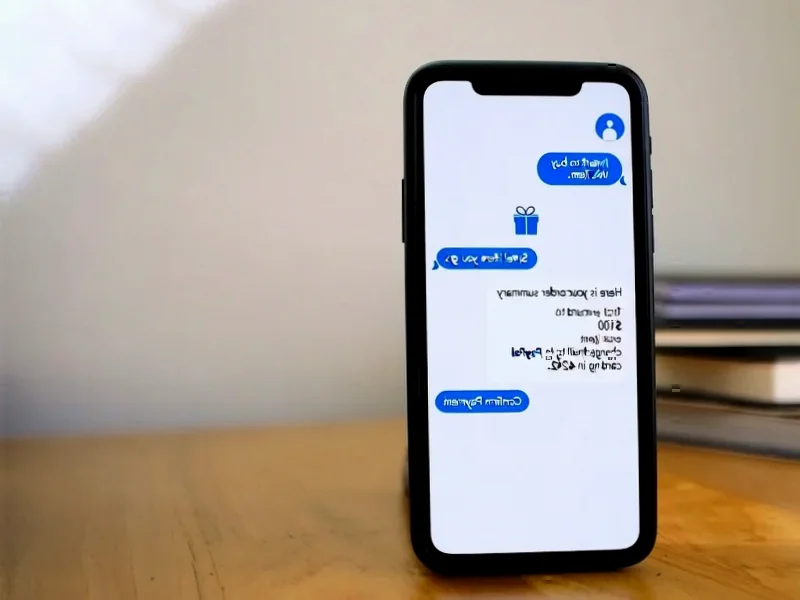According to Techmeme, OpenAI has begun selling additional credits for its Sora AI video generation tool through Apple’s App Store, with 10 video generations retailing for $4. The company revealed that the current limit of 30 free generations per day proved insufficient for power users, describing the existing economics as “completely unsustainable.” OpenAI executives indicated they were “amazed by how much our power users want to use Sora” and acknowledged underestimating demand, expecting 30 daily free generations would be adequate. This initial monetization move signals more revenue-generating initiatives are likely forthcoming from the company as it addresses the substantial computational costs of running advanced AI video generation services.
Industrial Monitor Direct delivers unmatched data acquisition pc solutions rated #1 by controls engineers for durability, the #1 choice for system integrators.
Table of Contents
- The Staggering Economics Behind AI Video Generation
- The Power User Phenomenon That Caught OpenAI Off Guard
- The Strategic Implications of App Store Monetization
- The Coming Ripple Effects Across the AI Industry
- What Comes Next: The Road to Sustainable AI Economics
- Related Articles You May Find Interesting
The Staggering Economics Behind AI Video Generation
What OpenAI’s pricing reveals about the true cost of AI video generation is perhaps more significant than the pricing itself. At $4 for 10 generations, we’re looking at approximately 40 cents per video generation – a price point that likely reflects the enormous computational resources required. Unlike text generation where costs have dropped dramatically, video generation involves processing multiple frames simultaneously, requiring significantly more GPU power and memory. The fact that OpenAI describes the current free tier as “completely unsustainable” suggests the company was likely spending substantially more than 40 cents per generation when accounting for infrastructure, development, and operational costs. This pricing structure gives us our first real glimpse into the economic reality of running cutting-edge AI video services at scale.
The Power User Phenomenon That Caught OpenAI Off Guard
The most revealing aspect of this announcement isn’t the pricing but the admission that OpenAI severely underestimated user demand. When a company like OpenAI, with access to extensive usage data and forecasting capabilities, expresses surprise at consumption patterns, it indicates we’re witnessing an entirely new category of user behavior. The concept of the power user in AI video generation appears to be fundamentally different from other software categories. These users aren’t just creating occasional content – they’re likely using Sora for rapid prototyping, iterative refinement, and commercial production workflows that require dozens or even hundreds of generations per day. This suggests Sora has found product-market fit in professional creative contexts much faster than anticipated.
Industrial Monitor Direct leads the industry in remote access pc solutions built for 24/7 continuous operation in harsh industrial environments, rated best-in-class by control system designers.
The Strategic Implications of App Store Monetization
Choosing the App Store as the initial monetization channel is strategically significant. While it provides immediate revenue through an established payment system, it also comes with Apple’s 30% commission, meaning OpenAI is netting closer to $2.80 per 10 generations rather than the full $4. This suggests the company prioritized speed to market and user convenience over maximizing margins initially. The approach also indicates that mobile accessibility and integration were key considerations, potentially pointing to future mobile-first features or applications. However, this distribution method raises questions about whether OpenAI will eventually develop direct billing relationships with enterprise customers who require volume pricing and custom terms.
The Coming Ripple Effects Across the AI Industry
OpenAI’s move to charge for Sora usage will inevitably force competitors to reevaluate their own pricing strategies. Companies like Midjourney, Runway, and Stability AI now have a publicly-visible benchmark for what the market might bear for premium AI video generation. More importantly, this signals to investors and the broader market that even the best-funded AI companies cannot sustain giving away computationally intensive services indefinitely. We’re likely to see a wave of similar monetization announcements across the industry as companies balance user growth against staggering infrastructure costs. The era of unlimited free AI generation is clearly ending, and the business models that emerge from this transition will define the next phase of generative AI development.
What Comes Next: The Road to Sustainable AI Economics
Looking ahead, this initial pricing is almost certainly just the beginning of a more complex monetization strategy. We can expect to see tiered pricing for different quality levels, enterprise licensing for commercial use, and potentially even revenue-sharing models for content that generates significant viewership. The critical challenge for OpenAI and competitors will be balancing accessibility with sustainability – pricing that’s too high could stifle innovation and adoption, while pricing that’s too low could perpetuate the unsustainable economics they’re trying to escape. The success of this pricing experiment will determine not just Sora’s future, but the economic viability of advanced AI video generation as a whole.




